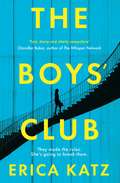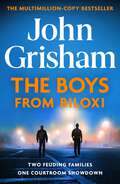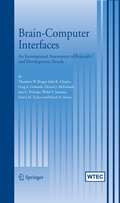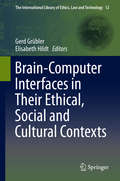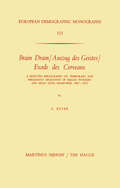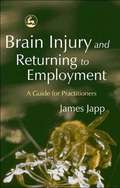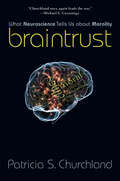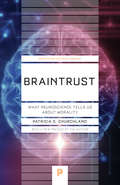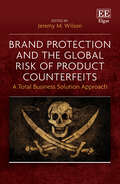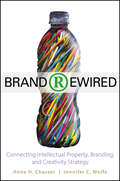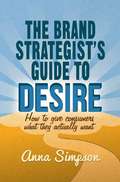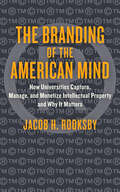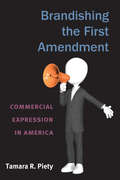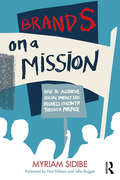- Table View
- List View
The Boys' Club: A gripping new thriller about money, sex and power
by Erica KatzThey made the rules. She's going to break them.When Alex Vogel gets a new job working at a corporate Manhattan law firm, she thinks all her dreams have come true. The pay checks are huge, the work is exciting, and the drinks are flowing every Friday night.But underneath the glossy veneer of the company, dark secrets are lurking. Her colleagues disappear into the bathroom for hits of cocaine, the partners sleep under their desks (if they sleep at all) and the firm's biggest client sexually harasses a string of women, none of whom will speak up. Alex soon realises that in order to fit in, she needs to become one of the boys - and turn a blind eye to what goes on. She needs to join in. But as her life begins to spiral out of control, Alex realises - the boys' club is a dangerous place to be...A brilliant, topical coming-of-age novel that gives a voice to women in the world of corporate law
The Boys from Biloxi: Two families. One courtroom showdown - the new legal thriller from the global phenomenon
by John GrishamSunday Times No 1 bestseller John Grisham returns to Mississippi in his most gripping thriller yet.'Invites comparisons with the Godfather trilogy - it spans two generations and several postwar decades - and has a vast cast and a winning energy' SUNDAY TIMESFor most of the last hundred years, Biloxi was known for its beaches, resorts, and seafood industry. But it had a darker side. It was also notorious for corruption and vice, everything from gambling, prostitution, bootleg liquor, drugs . . . even contract killings. The vice was controlled by a small cabal of mobsters, many of them rumoured to be members of the Dixie Mafia. Keith Rudy and Hugh Malco grew up in Biloxi in the sixties and were childhood friends. But as teenagers, their lives took them in different directions. Keith's father became a legendary prosecutor, determined to 'clean up the Coast.' Hugh's father became the 'Boss' of Biloxi's criminal underground. Keith went to law school and followed in his father's footsteps. Hugh preferred the nightlife and worked in his father's clubs. The two families were headed for a showdown, one that would happen in a courtroom. Rich with history and with a large cast of unforgettable characters, The Boys from Biloxi is a sweeping saga of two sons of immigrant families who grow up as friends, but ultimately find themselves in a knife-edge legal confrontation in which life itself hangs in the balance.In this novel, Grisham takes his powerful storytelling to the next level, his trademark twists and turns will keep you tearing through the pages until the stunning conclusion. 350+ million copies, 45 languages, 10 blockbuster films:NO ONE WRITES DRAMA LIKE JOHN GRISHAM
BP and the Macondo Spill: The Complete Story
by C. ReadThe complete story of the devastating BP oil spill of 2010. The author puts forward an objective account of what happened, a documentation of the true costs, not the hyperbolic costs, and an explanation of the science and business of the spill and its remediation.
Brain, Body, and Mind: Neuroethics with a Human Face
by Walter GlannonThis book is a discussion of the most timely and contentious issues in the two branches of neuroethics: the neuroscience of ethics; and the ethics of neuroscience. Drawing upon recent work in psychiatry, neurology, and neurosurgery, it develops a phenomenologically inspired theory of neuroscience to explain the brain-mind relation. The idea that the mind is shaped not just by the brain but also by the body and how the human subject interacts with the environment has significant implications for free will, moral responsibility, and moral justification of actions. It also provides a better understanding of how different interventions in the brain can benefit or harm us. In addition, the book discusses brain imaging techniques to diagnose altered states of consciousness, deep-brain stimulation to treat neuropsychiatric disorders, and restorative neurosurgery for neurodegenerative diseases. It examines the medical and ethical trade-offs of these interventions in the brain when they produce both positive and negative physical and psychological effects, and how these trade-offs shape decisions by physicians and patients about whether to provide and undergo them.
Brain, Body, and Mind: Neuroethics with a Human Face
by Walter GlannonThis book is a discussion of the most timely and contentious issues in the two branches of neuroethics: the neuroscience of ethics; and the ethics of neuroscience. Drawing upon recent work in psychiatry, neurology, and neurosurgery, it develops a phenomenologically inspired theory of neuroscience to explain the brain-mind relation. The idea that the mind is shaped not just by the brain but also by the body and how the human subject interacts with the environment has significant implications for free will, moral responsibility, and moral justification of actions. It also provides a better understanding of how different interventions in the brain can benefit or harm us. In addition, the book discusses brain imaging techniques to diagnose altered states of consciousness, deep-brain stimulation to treat neuropsychiatric disorders, and restorative neurosurgery for neurodegenerative diseases. It examines the medical and ethical trade-offs of these interventions in the brain when they produce both positive and negative physical and psychological effects, and how these trade-offs shape decisions by physicians and patients about whether to provide and undergo them.
Brain-Computer Interfaces: An international assessment of research and development trends
by Theodore W. Berger John K. Chapin Greg A. Gerhardt Dennis J. McFarland Jose C. Principe Walid V. Soussou Dawn M. Taylor Patrick A. TrescoWe have come to know that our ability to survive and grow as a nation to a very large degree depends upon our scientific progress. Moreover, it is not enough simply to keep 1 abreast of the rest of the world in scientific matters. We must maintain our leadership. President Harry Truman spoke those words in 1950, in the aftermath of World War II and in the midst of the Cold War. Indeed, the scientific and engineering leadership of the United States and its allies in the twentieth century played key roles in the successful outcomes of both World War II and the Cold War, sparing the world the twin horrors of fascism and totalitarian communism, and fueling the economic prosperity that followed. Today, as the United States and its allies once again find themselves at war, President Truman’s words ring as true as they did a half-century ago. The goal set out in the Truman Administration of maintaining leadership in science has remained the policy of the U. S. Government to this day: Dr. John Marburger, the Director of the Office of Science and Technology (OSTP) in the Executive Office of the President, made remarks to that effect during his 2 confirmation hearings in October 2001. The United States needs metrics for measuring its success in meeting this goal of maintaining leadership in science and technology. That is one of the reasons that the National Science Foundation (NSF) and many other agencies of the U. S.
Brain-Computer-Interfaces in their ethical, social and cultural contexts (The International Library of Ethics, Law and Technology #12)
by Gerd Grübler Elisabeth HildtThis volume summarizes the ethical, social and cultural contexts of interfacing brains and computers. It is intended for the interdisciplinary community of BCI stakeholders. Insofar, engineers, neuroscientists, psychologists, physicians, care-givers and also users and their relatives are concerned. For about the last twenty years brain-computer-interfaces (BCIs) have been investigated with increasing intensity and have in principle shown their potential to be useful tools in diagnostics, rehabilitation and assistive technology. The central promise of BCI technology is enabling severely impaired people in mobility, grasping, communication, and entertainment. Successful applications are for instance communication devices enabling locked-in patients in staying in contact with their environment, or prostheses enabling paralysed people in reaching and grasping. In addition to this, it serves as an introduction to the whole field of BCI for any interested reader.
Brain Drain / Auszug des Geistes / Exode des Cerveaux: A Selected Bibliography on Temporary and Permanent Migration of Skilled Workers and High-Level Manpower, 1967–1972 (European Demographic Monographs #3)
by G. BeyerIn 1967 S. Dedijer and L. Svennigson published their famous bibliography Brain Drain and Brain Gain, (Lund, 1968, index of authors, countries and regions). It contained 415 items from 40 countries and appeared at a time when the debate about the ad vantages and disadvantages of the brain drain was at its most intense. But the brain drain is still not a thing of the past - certain ly not for Europe. The European countries and those of the rest of the world are in different stages of transition. Industrialization has generally been associated, on the one hand with ever more rapid forms of trans portation and other forms of communication, a long-range rise in the per capita income, the exodus from the countryside to the cities and an enormous urbanization process, and the demand for improved social and economic security, on the other. But these characteristics tend to be more relative than absolute. It is not possible to make a distinct division between developed nations, and countries in various stages of development. All countries are constantly undergoing change and are in transition with respect to development. The constant migration of skilled workers and es pecially the search for better training and working conditions on the part of academically trained people is inseparable from this process of transition - i. e. from the phenomenon of long-range. permanent change. Fortunately this is not as deplorable as some observers would make it appear to be.
Brain Injury and Returning to Employment: A Guide for Practitioners (PDF)
by James JappThe multi-disability nature of acquired brain injury and its complex effects make the return to employment particularly problematic. Brain Injury and Returning to Employment provides a clear overview of the cognitive and psychological difficulties associated with brain injury and discusses how people affected by it can prepare for and remain in employment. The author offers effective occupational techniques to address impaired memory, attention and executive functions, and difficulties with organisation and planning skills, as well as the speech impairments commonly associated with acquired brain injury. He also examines the environmental, emotional, physical and psychological barriers to work reintegration and offers a range of solutions to these problems, including mentoring relationships with colleagues. This book will be essential reading for professionals working with brain-injured individuals in the fields of psychology, occupational therapy, employment advisory services and human resources.
Brain Organoids in Research and Therapy: Fundamental Ethical and Legal Aspects (Advances in Neuroethics)
by Hans-Georg Dederer David HamburgerThis volume elucidates the pivotal ethical and legal issues arising from the use of brain organoids for research, therapeutic and enhancement purposes.The function of the human brain is still a mystery. Until recently, only post-mortem tissue was available for a structural examination of the brain. Consequently, the examination results could only reflect the state at the end of life. However, in order to better understand the development and function of the human brain, dynamic and functional investigations of different human brain cells are necessary. This is where brain organoids, artificially grown in vitro miniature brains, provide the opportunity for more flexible research scenarios.At the same time, however, the use of brain organoids in research and therapy raises the question of how these new entities are to be treated from an ethical and legal point of view. Against this background, this volume aims at clarifying the normative implications of the use of brain organoids in research and therapy. The ethical reflections on the status of brain organoids, informed consent, human-to-animal chimeras and neuro-enhancement are mirrored by corresponding legal analyses. The ethical and legal assessments are preceded by an introduction to the scientific and medical background of the brain organoid technology. A final chapter will be devoted to the issue of whether international harmonization of normative standards for brain organoid research and therapy is feasible and advisable.
Brain Science for Lawyers, Judges, and Policymakers
by Morris B. Hoffman Francis X. Shen Owen D. Jones Jeffrey D. Schall Anthony D. WagnerBrain science in the form of neuroscientific evidence now appears frequently in courtrooms and policy discussions alike. Many legal issues are at stake, such as how to separate the best uses of brain science information from those that are potentially biasing or misleading. It is crucial to evaluate brain science evidence in light of relevant legal standards (such as the Daubert and Frye Rules). Brain Science for Lawyers, Judges, and Policymakers responds to this rapidly changing legal landscape, providing a user-friendly introduction to the fundamentals of neuroscience for lawyers, advocates, judges, legal academics, and policymakers. It features detailed but clear illustrations, as well as a comprehensive and accessible overview of developments in legally relevant neuroscience. Readers will learn brain science terms, how to understand and discuss brain structure and function in legally relevant contexts, and how to avoid over- or under-interpreting neuroscientific evidence. The book begins with a survey of the kinds of litigation, legislation, and regulation where neuroscience is currently being used. It provides accessible descriptions of basic brain anatomy and brain function as well as an overview of how modern technologies can reveal the brain structures and brain functions of individuals. It finishes with cautions and limitations, including timely and thought-provoking observations about where the future of neurolaw might lead. Throughout, the authors offer clear and concise guidance on understanding both the promise and the limitations of using brain science in law and policymaking.
Brain Science for Lawyers, Judges, and Policymakers
by Morris B. Hoffman Francis X. Shen Owen D. Jones Jeffrey D. Schall Anthony D. WagnerBrain science in the form of neuroscientific evidence now appears frequently in courtrooms and policy discussions alike. Many legal issues are at stake, such as how to separate the best uses of brain science information from those that are potentially biasing or misleading. It is crucial to evaluate brain science evidence in light of relevant legal standards (such as the Daubert and Frye Rules). Brain Science for Lawyers, Judges, and Policymakers responds to this rapidly changing legal landscape, providing a user-friendly introduction to the fundamentals of neuroscience for lawyers, advocates, judges, legal academics, and policymakers. It features detailed but clear illustrations, as well as a comprehensive and accessible overview of developments in legally relevant neuroscience. Readers will learn brain science terms, how to understand and discuss brain structure and function in legally relevant contexts, and how to avoid over- or under-interpreting neuroscientific evidence. The book begins with a survey of the kinds of litigation, legislation, and regulation where neuroscience is currently being used. It provides accessible descriptions of basic brain anatomy and brain function as well as an overview of how modern technologies can reveal the brain structures and brain functions of individuals. It finishes with cautions and limitations, including timely and thought-provoking observations about where the future of neurolaw might lead. Throughout, the authors offer clear and concise guidance on understanding both the promise and the limitations of using brain science in law and policymaking.
Braintrust: What Neuroscience Tells Us about Morality
by Patricia S. ChurchlandWhat is morality? Where does it come from? And why do most of us heed its call most of the time? In Braintrust, neurophilosophy pioneer Patricia Churchland argues that morality originates in the biology of the brain. She describes the "neurobiological platform of bonding" that, modified by evolutionary pressures and cultural values, has led to human styles of moral behavior. The result is a provocative genealogy of morals that asks us to reevaluate the priority given to religion, absolute rules, and pure reason in accounting for the basis of morality. Moral values, Churchland argues, are rooted in a behavior common to all mammals--the caring for offspring. The evolved structure, processes, and chemistry of the brain incline humans to strive not only for self-preservation but for the well-being of allied selves--first offspring, then mates, kin, and so on, in wider and wider "caring" circles. Separation and exclusion cause pain, and the company of loved ones causes pleasure; responding to feelings of social pain and pleasure, brains adjust their circuitry to local customs. In this way, caring is apportioned, conscience molded, and moral intuitions instilled. A key part of the story is oxytocin, an ancient body-and-brain molecule that, by decreasing the stress response, allows humans to develop the trust in one another necessary for the development of close-knit ties, social institutions, and morality. A major new account of what really makes us moral, Braintrust challenges us to reconsider the origins of some of our most cherished values.
Braintrust: What Neuroscience Tells Us about Morality (PDF)
by Patricia S. ChurchlandWhat is morality? Where does it come from? And why do most of us heed its call most of the time? In Braintrust, neurophilosophy pioneer Patricia Churchland argues that morality originates in the biology of the brain. She describes the "neurobiological platform of bonding" that, modified by evolutionary pressures and cultural values, has led to human styles of moral behavior. The result is a provocative genealogy of morals that asks us to reevaluate the priority given to religion, absolute rules, and pure reason in accounting for the basis of morality. Moral values, Churchland argues, are rooted in a behavior common to all mammals--the caring for offspring. The evolved structure, processes, and chemistry of the brain incline humans to strive not only for self-preservation but for the well-being of allied selves--first offspring, then mates, kin, and so on, in wider and wider "caring" circles. Separation and exclusion cause pain, and the company of loved ones causes pleasure; responding to feelings of social pain and pleasure, brains adjust their circuitry to local customs. In this way, caring is apportioned, conscience molded, and moral intuitions instilled. A key part of the story is oxytocin, an ancient body-and-brain molecule that, by decreasing the stress response, allows humans to develop the trust in one another necessary for the development of close-knit ties, social institutions, and morality. A major new account of what really makes us moral, Braintrust challenges us to reconsider the origins of some of our most cherished values.
Braintrust: What Neuroscience Tells Us about Morality (Princeton Science Library (PDF))
by Patricia S. ChurchlandWhat is morality? Where does it come from? And why do most of us heed its call most of the time? In Braintrust, neurophilosophy pioneer Patricia Churchland argues that morality originates in the biology of the brain. She describes the "neurobiological platform of bonding" that, modified by evolutionary pressures and cultural values, has led to human styles of moral behavior. The result is a provocative genealogy of morals that asks us to reevaluate the priority given to religion, absolute rules, and pure reason in accounting for the basis of morality. Moral values, Churchland argues, are rooted in a behavior common to all mammals--the caring for offspring. The evolved structure, processes, and chemistry of the brain incline humans to strive not only for self-preservation but for the well-being of allied selves--first offspring, then mates, kin, and so on, in wider and wider "caring" circles. Separation and exclusion cause pain, and the company of loved ones causes pleasure; responding to feelings of social pain and pleasure, brains adjust their circuitry to local customs. In this way, caring is apportioned, conscience molded, and moral intuitions instilled. A key part of the story is oxytocin, an ancient body-and-brain molecule that, by decreasing the stress response, allows humans to develop the trust in one another necessary for the development of close-knit ties, social institutions, and morality. A major new account of what really makes us moral, Braintrust challenges us to reconsider the origins of some of our most cherished values.
Braintrust: What Neuroscience Tells Us about Morality (Princeton Science Library (PDF))
by Patricia S. ChurchlandWhat is morality? Where does it come from? And why do most of us heed its call most of the time? In Braintrust, neurophilosophy pioneer Patricia Churchland argues that morality originates in the biology of the brain. She describes the "neurobiological platform of bonding" that, modified by evolutionary pressures and cultural values, has led to human styles of moral behavior. The result is a provocative genealogy of morals that asks us to reevaluate the priority given to religion, absolute rules, and pure reason in accounting for the basis of morality. Moral values, Churchland argues, are rooted in a behavior common to all mammals--the caring for offspring. The evolved structure, processes, and chemistry of the brain incline humans to strive not only for self-preservation but for the well-being of allied selves--first offspring, then mates, kin, and so on, in wider and wider "caring" circles. Separation and exclusion cause pain, and the company of loved ones causes pleasure; responding to feelings of social pain and pleasure, brains adjust their circuitry to local customs. In this way, caring is apportioned, conscience molded, and moral intuitions instilled. A key part of the story is oxytocin, an ancient body-and-brain molecule that, by decreasing the stress response, allows humans to develop the trust in one another necessary for the development of close-knit ties, social institutions, and morality. A major new account of what really makes us moral, Braintrust challenges us to reconsider the origins of some of our most cherished values.
Brand Protection and the Global Risk of Product Counterfeits: A Total Business Solution Approach
Product counterfeits and other brand infringements represent a growing and substantial risk to firms, consumers, and society. While policing such illicit activity is important, there is much that firms can do to protect themselves and their customers. Grounded in field research and practice, this book presents a total business solution approach to brand protection that enables firms to prevent infringement from occurring and respond efficiently when it does.This total business solution provides a framework for building and advancing brand protection programs that are strategic, comprehensive, and evidence based. Coupling perspectives and illustrations from several academic disciplines and industries, this book serves as a road map or blueprint for companies to develop and implement a proactive strategy to protect their brands. It serves as a guide to help firms continuously learn, innovate, and efficiently allocate resources in a way that maximizes brand protection performance.Graduate and executive education programs and scholars in business, law and criminal justice will benefit from adopting Brand Protection and the Global Risk of Product Counterfeits as course reading, research or a valued addition to their personal library. Brand protection practitioners in firms large and small, working in brand protection, security, supply chain, legal, quality assurance, packaging, C-suite, marketing, sales, and related areas will find this book essential in helping them develop a roadmap for establishing a robust brand protection program and take their existing brand protection to the next level of effectiveness and efficiency.
Brand Rewired: Connecting Branding, Creativity, and Intellectual Property Strategy
by Anne H. Chasser Jennifer C. WolfeDiscover how the world's leading companies have added value to their company by rewiring the brand creation process Brand Rewired showcases the world's leading companies in branding and how they have added value to their company by rewiring the brand creation process to intersect strategic thinking about intellectual property without stifling creativity. Features interviews with executives from leading worldwide companies including: Kodak, Yahoo, Kraft, J.Walter Thompson, Kimberly Clark, Scripps Networks Interactive, the Kroger Company, GE, Procter & Gamble, LPK, Northlich and more Highlights how to maximize return on investment in creating a powerful brand and intellectual property portfolio that can be leveraged economically for many years to come Reveals how to reduce costs in the brand creation and legal process Illustrates how a brand strategy intersecting with an equally powerful intellectual property strategy produces a greater economic return and more rewards for the brand project leaders Innovative in its approach, Brand Rewired shows you how how leading companies are abandoning the old school research-and-development-driven innovation philosophy and evolving to a Brand Rewired approach of innovating at the consumer level, using multi-disciplinary teams to build a powerful brand and intellectual asset to maximize return on investment.
Brand Rewired: Connecting Branding, Creativity, and Intellectual Property Strategy
by Anne H. Chasser Jennifer C. WolfeDiscover how the world's leading companies have added value to their company by rewiring the brand creation process Brand Rewired showcases the world's leading companies in branding and how they have added value to their company by rewiring the brand creation process to intersect strategic thinking about intellectual property without stifling creativity. Features interviews with executives from leading worldwide companies including: Kodak, Yahoo, Kraft, J.Walter Thompson, Kimberly Clark, Scripps Networks Interactive, the Kroger Company, GE, Procter & Gamble, LPK, Northlich and more Highlights how to maximize return on investment in creating a powerful brand and intellectual property portfolio that can be leveraged economically for many years to come Reveals how to reduce costs in the brand creation and legal process Illustrates how a brand strategy intersecting with an equally powerful intellectual property strategy produces a greater economic return and more rewards for the brand project leaders Innovative in its approach, Brand Rewired shows you how how leading companies are abandoning the old school research-and-development-driven innovation philosophy and evolving to a Brand Rewired approach of innovating at the consumer level, using multi-disciplinary teams to build a powerful brand and intellectual asset to maximize return on investment.
The Brand Strategist's Guide to Desire: How to give consumers what they actually want
by A. SimpsonThis is a guide to help brand strategists consider what people really want in order to enhance their lives, and think about the role of their brand in responding to these desires. It offers a new framework for understanding desire, based on some of the things that are really important to us: our family, friends and community; the desire to explore, learn and grow; how we experience the world through our senses; our appetite to live life to the full; and what we set out to achieve. Brand strategists are the link between a commercial proposition and the lives it means to touch. They can talk to the people the company wants to reach, and – more importantly – listen to them. A brand which both enhances people’s lives, and nurtures the resources on which they depend, will prove more resilient, win trust and achieve better results.
The Branding of the American Mind: How Universities Capture, Manage, and Monetize Intellectual Property and Why It Matters (Critical University Studies)
by Jacob H. RooksbyUniversities generate an enormous amount of intellectual property, including copyrights, trademarks, patents, Internet domain names, and even trade secrets. Until recently, universities often ceded ownership of this property to the faculty member or student who created or discovered it in the course of their research. Increasingly, though, universities have become protective of this property, claiming it for their own use and licensing it as a revenue source instead of allowing it to remain in the public sphere. Many universities now behave like private corporations, suing to protect trademarked sports logos, patents, and name brands.Yet how can private rights accumulation and enforcement further the public interest in higher education? What is to be gained and lost as institutions become more guarded and contentious in their orientation toward intellectual property? In this pioneering book, law professor Jacob H. Rooksby uses a mixture of qualitative, quantitative, and legal research methods to grapple with those central questions, exposing and critiquing the industry;€™s unquestioned and growing embrace of intellectual property from the perspective of research in law, higher education, and the social sciences.While knowledge creation and dissemination have a long history in higher education, using intellectual property as a vehicle for rights staking and enforcement is a relatively new and, as Rooksby argues, dangerous phenomenon for the sector. The Branding of the American Mind points to higher education;€™s love affair with intellectual property itself, in all its dimensions, including newer forms that are less tied to scholarly output. The result is an unwelcome assault on the public;€™s interest in higher education. Presuming no background knowledge of intellectual property, and ending with a call to action, The Branding of the American Mind explores applicable laws, legal regimes, and precedent in plain English, making the book appealing to anyone concerned for the future of higher education.
The Branding of the American Mind: How Universities Capture, Manage, and Monetize Intellectual Property and Why It Matters (Critical University Studies)
by Jacob H. RooksbyUniversities generate an enormous amount of intellectual property, including copyrights, trademarks, patents, Internet domain names, and even trade secrets. Until recently, universities often ceded ownership of this property to the faculty member or student who created or discovered it in the course of their research. Increasingly, though, universities have become protective of this property, claiming it for their own use and licensing it as a revenue source instead of allowing it to remain in the public sphere. Many universities now behave like private corporations, suing to protect trademarked sports logos, patents, and name brands.Yet how can private rights accumulation and enforcement further the public interest in higher education? What is to be gained and lost as institutions become more guarded and contentious in their orientation toward intellectual property? In this pioneering book, law professor Jacob H. Rooksby uses a mixture of qualitative, quantitative, and legal research methods to grapple with those central questions, exposing and critiquing the industry;€™s unquestioned and growing embrace of intellectual property from the perspective of research in law, higher education, and the social sciences.While knowledge creation and dissemination have a long history in higher education, using intellectual property as a vehicle for rights staking and enforcement is a relatively new and, as Rooksby argues, dangerous phenomenon for the sector. The Branding of the American Mind points to higher education;€™s love affair with intellectual property itself, in all its dimensions, including newer forms that are less tied to scholarly output. The result is an unwelcome assault on the public;€™s interest in higher education. Presuming no background knowledge of intellectual property, and ending with a call to action, The Branding of the American Mind explores applicable laws, legal regimes, and precedent in plain English, making the book appealing to anyone concerned for the future of higher education.
Brandishing the First Amendment: Commercial Expression in America
by Tamara PietyTamara R. Piety argues that increasingly expansive First Amendment protections for commercial speech imperil public health, safety, and welfare; the reliability of commercial and consumer information; the stability of financial markets; and the global environment. Using evidence from public relations and marketing, behavioral economics, psychology, and cognitive studies, she shows how overly permissive extensions of protections to commercial expression limit governmental power to address a broad range of public policy issues.
Brands on a Mission: How to Achieve Social Impact and Business Growth Through Purpose
by Myriam SidibeBrands on a Mission explores the importance of creating a performance culture that is built on driving impact through purpose, and the type of talent required to drive these transformational changes within companies – from CEO to brand developers. Using evidence from interviews and stories from over 100 CEOs, thought leaders and brand managers, the book presents an emergent model that organisations can follow to build purpose into their growth strategy – and shows how to bridge the gap between Brand Say and Brand Do. Readers will learn from the real experts in the field: how Paul Polman, former CEO of Unilever, built purpose into the DNA of his company; what keeps Alan Jope (new CEO, Unilever) and Emmanuel Faber (CEO, Danone) awake at night; and how brand developers from Durex, Dove, Discovery and LIXIL have made choices and the reasons behind them. In this book you will learn how a soap brand Lifebuoy taught one billion people about hygiene, how a beer is tackling gender-based violence, and how a toothpaste is tackling school absenteeism amongst many others. Renowned experts like Peter Piot (Director, London School of Health and Tropical Medicine), Michael Porter (Professor, Harvard School of Business), Jane Nelson (Director, Corporate Responsibility Initiative, Harvard Kennedy School) and Susie Orbach (leading feminist and formerly professor, London School of Economics) also share examples, data and their everyday experiences of helping corporates create a culture of purpose. And leading NGOs and UN experts like Lawrence Haddad (Executive Director, GAIN) and Natalia Kanem (Executive Director of UNFPA) will recount how the public and private sector have worked together to create an accelerated path to reaching the Sustainable Development Goals by 2030. The book provides a clear pathway of how to take brands through the journey of developing impactful social missions and driving business growth, and is an essential guide for both managers and students alike.
Brands on a Mission: How to Achieve Social Impact and Business Growth Through Purpose
by Myriam SidibeBrands on a Mission explores the importance of creating a performance culture that is built on driving impact through purpose, and the type of talent required to drive these transformational changes within companies – from CEO to brand developers. Using evidence from interviews and stories from over 100 CEOs, thought leaders and brand managers, the book presents an emergent model that organisations can follow to build purpose into their growth strategy – and shows how to bridge the gap between Brand Say and Brand Do. Readers will learn from the real experts in the field: how Paul Polman, former CEO of Unilever, built purpose into the DNA of his company; what keeps Alan Jope (new CEO, Unilever) and Emmanuel Faber (CEO, Danone) awake at night; and how brand developers from Durex, Dove, Discovery and LIXIL have made choices and the reasons behind them. In this book you will learn how a soap brand Lifebuoy taught one billion people about hygiene, how a beer is tackling gender-based violence, and how a toothpaste is tackling school absenteeism amongst many others. Renowned experts like Peter Piot (Director, London School of Health and Tropical Medicine), Michael Porter (Professor, Harvard School of Business), Jane Nelson (Director, Corporate Responsibility Initiative, Harvard Kennedy School) and Susie Orbach (leading feminist and formerly professor, London School of Economics) also share examples, data and their everyday experiences of helping corporates create a culture of purpose. And leading NGOs and UN experts like Lawrence Haddad (Executive Director, GAIN) and Natalia Kanem (Executive Director of UNFPA) will recount how the public and private sector have worked together to create an accelerated path to reaching the Sustainable Development Goals by 2030. The book provides a clear pathway of how to take brands through the journey of developing impactful social missions and driving business growth, and is an essential guide for both managers and students alike.
